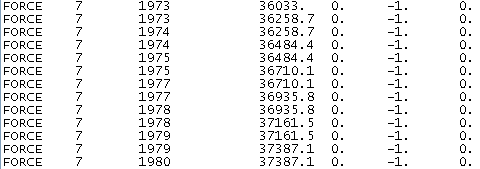Hello everyone,
I would like to apply a variable distributed load to an edge of my model, something like this :

When I do the BDF the force is moved to the nodes but the problem is that values are not coherent at all :

If I want to make my own BDF not using Patran, how can I find this distribution ?
I would like to apply a variable distributed load to an edge of my model, something like this :

When I do the BDF the force is moved to the nodes but the problem is that values are not coherent at all :

If I want to make my own BDF not using Patran, how can I find this distribution ?
